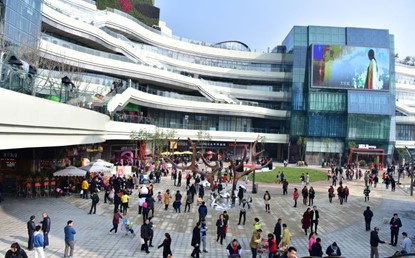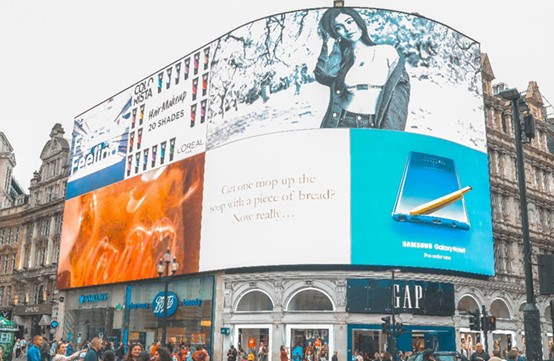Have you ever been captivated by the mind-bending, “naked-eye” 3D billboards that have been popping up in major cities around the world? These immersive displays, showcasing everything from cascading waterfalls to larger-than-life animations, owe their stunning visuals to a groundbreaking technology: the flexible LED screen. This progress in LED display technology facilitates the creative and awe-inspiring installations that were once the stuff of science fiction.
But as we marvel at these curving, twisting displays, a couple of questions naturally arise: how can a screen, something we traditionally think of as rigid and fragile, be so malleable? And, perhaps more importantly, is a flexible LED screen durable enough to withstand the test of time? Lucky you, they are all answered in this blog.
A high-quality flexible LED screen is a significant investment, so its durability is a key consideration. Generally, a professional-grade LED display can have a lifespan of 50,000 to 100,000 hours. This translates to roughly 5 to 11 years of continuous operation. However, several factors can influence this lifespan:
The adaptability of a flexible LED screen comes from its unique construction. Unlike rigid screens, these displays are built on a pliable substrate, such as rubber or a flexible Printed Circuit Board (PCB). The LEDs and electronic components are specifically engineered to be resilient and deformable, allowing the screen to curve and flex without damaging the pixels. This innovative design is the key to creating the stunning curved displays used in modern advertising and art installations.
Choosing the right hardware is what brings a creative vision to reality. When it comes to crafting a durable and visually stunning custom LED display, Retop stands out with its innovative solutions. Here are Retop‘s solutions that are perfectly suited for creating everything from smooth curves to jaw-dropping naked eye 3D installations.
The Retop FC Series is engineered to bend, curve, and conform to the most imaginative shapes.

Built for demanding outdoor installations, TES II PRO combines robust engineering with creative design.

TES II PRO-S is engineered for outdoor applications where weight, thickness, and energy efficiency are top priorities.

The power of flexible LED screens lies in their ability to move beyond flat rectangles, empowering designers to create unique digital sculptures. The possibilities are vast and include:
Concave screens curve inward for immersive experiences, while convex screens curve outward to wrap around columns and corners for wide-angle viewing.

By splicing modules, designers can create perfect circles, arcs, and ovals. Screens can also be wrapped around pillars to create 360-degree cylindrical displays.

The technology allows for fluid, nature-inspired shapes. By combining concave and convex sections, wave-like or ribbon displays can be crafted to flow across ceilings and walls.

With advanced techniques, complete spheres, cubes, and other complex 3D structures are possible. This capability is essential for creating the mind-bending visuals of "naked eye" 3D displays.

Q: What are common quality concerns with flexible LED screens?
A: Lower-quality screens may be prone to micro-cracks or delamination (separation of layers) over time with repeated flexing. Additionally, all LEDs experience gradual brightness degradation, which can be accelerated by running the screen at maximum brightness for long periods.
Q: Are flexible LED screens suitable for outdoor use?
A: Yes, specific product lines are designed for outdoor durability. For example, the Retop TES II PRO and PRO-S series feature IP65 waterproof cabinets to withstand harsh weather like heavy rain and salt fog.
Q: How do "naked-eye" 3D effects work on these screens?
A: Products like the Retop TES II PRO series use innovative cabinet designs with bevelled edges to create seamless 90-degree or curved corners. When content is displayed on these angled screens, it produces powerful three-dimensional effects for viewers.
I consent to receive emails about news, marketing&product updates from Retop in accordance with the Retop Privacy Policy